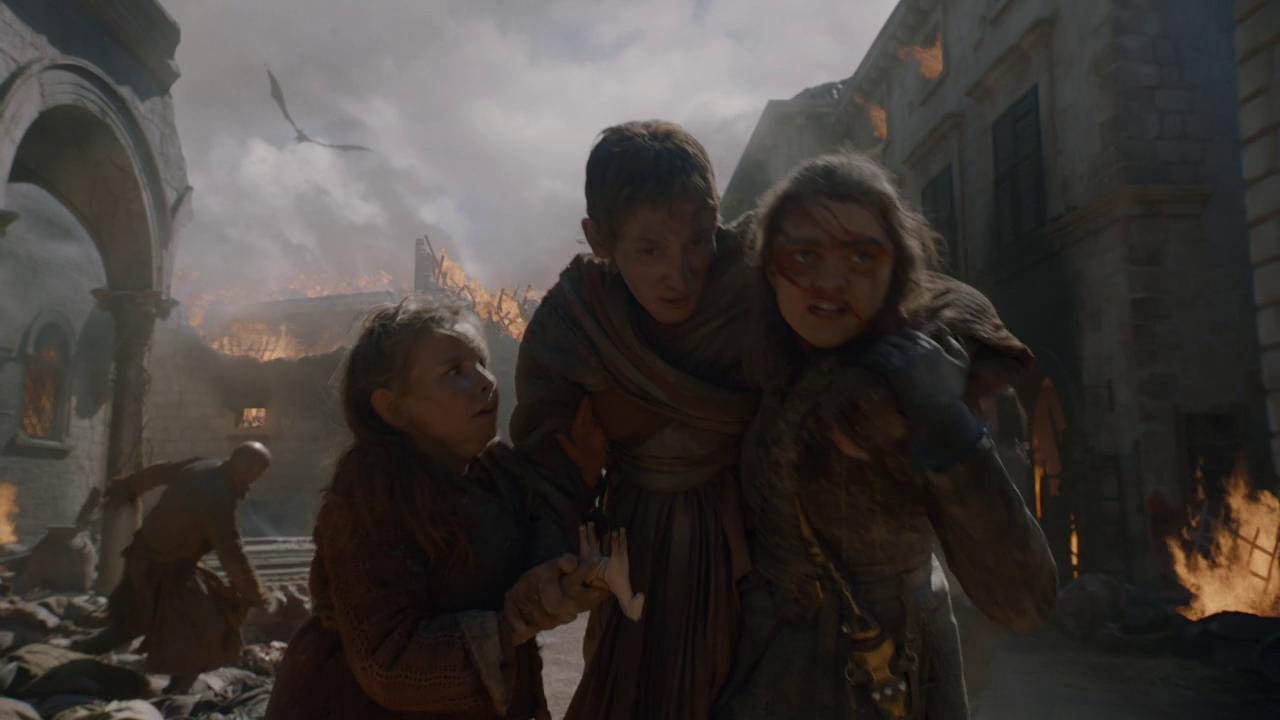Arya has been killing people since Season 1 Episode 8 (the stable boy), subsequently creating a "kill list" and training to become an assassin.
In Season 8 Episode 5, she enters King's Landing with the intention of killing Cersei, but Sandor Clegane convinces her to abandon that plan. After that, she gets caught in the chaos caused by Daenerys's destruction of the city. At a certain point, she starts helping people to get out of this death trap. In the process, she almost gets killed by Dothraki riders, who kill the mother who had previously helped her get up so she wouldn't get trampled, after which she almost gets burned to death by Drogon. This is the closest that Arya gets to a death experience and "purification by fire". (Note that in these scenes of destruction, she is the only main character who experiences these events like the "smallfolk".)
Purification by fire is mentioned, for example, in Numbers 31:23 (King James Version:
Every thing that may abide the fire, ye shall make it go through the fire, and it shall be clean: nevertheless it shall be purified with the water of separation: and all that abideth not the fire ye shall make go through the water.
The horse's white colour represents purity or innocence. Whiteness as a symbol of purity as mentioned, for example, in Isaiah 1:18 (King James Version):
Come now, and let us reason together, saith the LORD: though your sins be as scarlet, they shall be as white as snow; though they be red like crimson, they shall be as wool.
Arya's sins were as scarlet as the blood she shed. After surviving the dragon's fire (she is covered in ash), she is released from those sins, which is when the white horse appears to carry her away from the death pit that King's Landing has become.
This interpretation may not represent what George R. R. Martin or David Benioff & D. B. Weiss intended, but meaning or interpretation is not restricted by authorial intent.
The above is not intended as a "Biblical" interpretation of the scene with the white horse. The Bible quotes are used to give existing examples of connotations, in this case from Judeo-Christian writings with which both George R. R. Martin and screenwriters may be familiar, so the connotations give here should not come across as far-fetched. George R. R. Martin said in an interview published in The Guardian on 16 August 2014 that users may see their own meanings:
Oh, sure. And those meanings may very well be there. An author is not necessarily infallible when discussing his own work because so much takes place in the subconscious.
P.S.: Based on the above, I reject the interpretation, offered by one of the other answers, that the white horse refers to the pale horse of one of the Four Horsemen of the Apocalypse. First of all, the horse does not have a rider when it appears. Second, it appears when the killing has ended. Finally, the riders that bring death in that scene are the Dothraki horsemen (at least three of them; one might count Daenerys as the "fourth rider" here) from which she barely escapes and who kill the mother she was trying to help.



